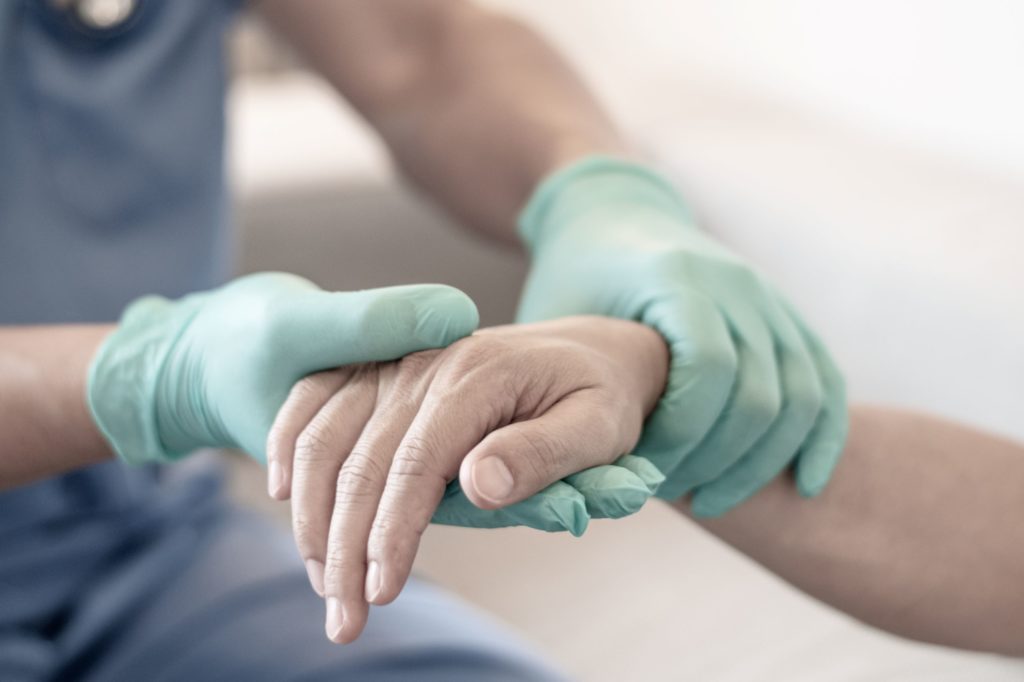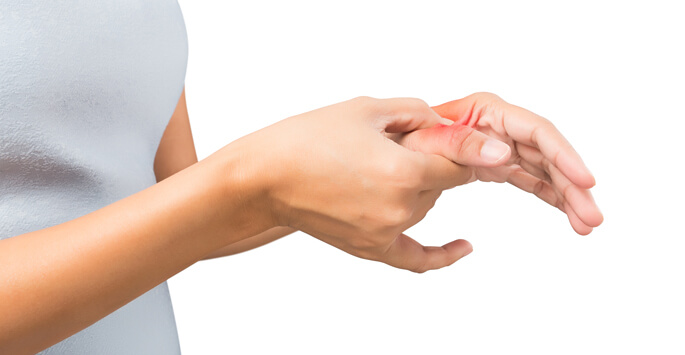The differences between osteoarthritis and rheumatoid arthritis are significant, but the ability to identify one over the other can be somewhat elusive to the general public. A proper diagnosis is crucial for effective arthritis treatment.
The symptoms of these two common forms of arthritis may be similar, but the conditions are actually very different.
The word “arthritis” itself isn’t as much of a diagnosis as a description of more than 100 different types of ailments that involve joint pain or inflammation. Osteoarthritis and rheumatoid arthritis are two of the most common forms. According to the Centers for Disease Control, more than 32.5 million U.S. adults suffer from osteoarthritis. Rheumatoid arthritis affects more than 1.3 million adults in the U.S.
To help you communicate your concerns to Dr. Arora, we offer the following comparison as a guide.
What is Osteoarthritis?
In very general terms, osteoarthritis occurs when cartilage in a joint wears out. It usually begins in one joint and may never affect other joints.
The pain can be mild, moderate, or severe. Moderate or severe osteoarthritis pain can make it difficult for patients to complete everyday activities, such as buttoning a shirt or tying their shoes.
It is most common among women and occurs more frequently as people get older. Other risk factors for osteoarthritis include obesity, genetics, and joint injury or overuse.
What is Rheumatoid Arthritis?
Rheumatoid arthritis is an autoimmune disease. When this occurs, the immune system essentially “malfunctions” and attacks the synovial membrane that encases and protects the joints. It frequently affect several joints at the same time.
Beyond the pain, inflammation, and swelling common in other forms of arthritis, rheumatoid arthritis symptoms may include fever, anemia, fatigue, and loss of appetite. Rheumatoid arthritis may also show signs in the skin, eyes, lungs, heart, kidneys, salivary glands, nerve tissue, bone marrow, and blood vessels. It tends to be symmetrical, so symptoms may occur on both sides of the body simultaneously.
This form of arthritis is a chronic condition. There is no cure, and it is likely to progress over time. However, treatment options can reduce pain, make the symptoms manageable, and prevent significant joint damage.
Women are more likely to develop RA than men are. RA can begin at any age but most commonly starts in middle age. Other risk factors for rheumatoid arthritis include family history, smoking, and excess weight.
4 Key Differences Between Osteoarthritis and Rheumatoid Arthritis
1. Number of Joints Affected
Osteoarthritis may only affect one joint. Rheumatoid arthritis may affect several at the same time.
2. Symmetry
Rheumatoid arthritis tends to be symmetrical, meaning it affects both elbows, for instance. Osteoarthritis is more centralized, so it might or might not affect both sides of the body.
However, both sides of the body may become affected due to the exertion of too much pressure on one side. For example, if you experience osteoarthritis pain in your left wrist, you may use your right wrist more often, eventually causing the right wrist to act up as well.
3. Duration of Symptoms
The duration and extent of the pain is different.
With RA, joint pain and swelling can come and go, but the disease never really goes away. The goal of rheumatoid arthritis treatment is to make you feel better and get your symptoms under control, known as “remission.”
Osteoarthritis is also permanent and the pain and swelling are similar, but the condition can improve over time.
4. Additional Symptoms
Rheumatoid arthritis may have symptoms such as fever, fatigue, anemia, and loss of appetite. Osteoarthritis is usually only pain, swelling, and some loss of flexibility in the particular joint that is affected at the time.
If you are experiencing arthritis pain in your hands, wrists, or elbows, it’s important to determine the type of arthritis in order to create the best treatment and prevention plan for you. For an evaluation, diagnosis, and arthritis treatment, make an appointment to see Dr. Arora in Warren, West Bloomfield, Howell, or Macomb Township.
















